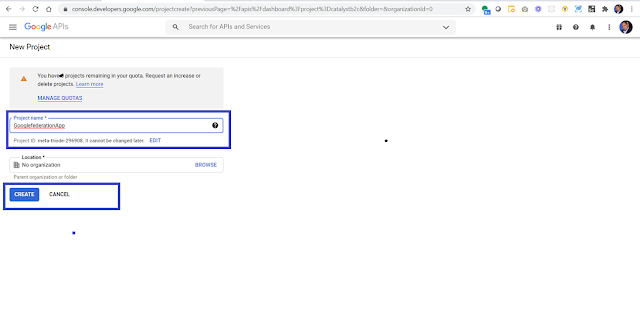Adaptive Cards are platform-agnostic snippets of UI, authored in JSON, that apps and services can openly exchange. When delivered to a specific app, the JSON is transformed into native UI that automatically adapts to its surroundings. It helps design and integrate light-weight UI for all major platforms and frameworks.
- Card Elements
List of all elements available for use within Adaptive Cards - Rendered Card
Preview rendering of the card as it would appear in the currently selected host app. - Card Payload Editor
The browser-friendly JSON editor contains the source of the Adaptive Card that's rendered in the Rendered Card pane. - Card Structure
The card is represented in this panel as a hierarchical structure. Notice that as you select elements in this panel, the corresponding control is highlighted in the Rendered Card pane. - Element Properties
The properties, including those that aren't specified in the source of the Adaptive Card, are displayed in this panel for the control currently selected in the Card Structure panel. - Sample Data Editor
This panel contains the JSON used when using the templating capability of Adaptive Cards.
- {
- "type": "TextBlock",
- "text": "Manoj Mittal"
- }
- {
- "type": "TextBlock",
- "text": "${UserName}"
- }
- Launch Visual Studio 2019
- Select Create new project
- Select Azure Bot Framework (.Net Core 2.1 or 3.1)
- Create Project.
- Login to https://adaptivecards.io/designer/
- Card Element Section desing your card with placehoder, which will be used to bind the data at client side.
- {
- "$schema": "http://adaptivecards.io/schemas/adaptive-card.json",
- "type": "AdaptiveCard",
- "version": "1.2",
- "body": [
- {
- "id": "cardHeader",
- "type": "Container",
- "items": [
- {
- "id": "planetName",
- "type": "TextBlock",
- "weight": "Bolder",
- "size": "Medium",
- "text": "${name}"
- }
- ]
- },
- {
- "type": "Container",
- "id": "cardBody",
- "items": [
- {
- "id": "planetSummary",
- "type": "TextBlock",
- "wrap": true,
- "text": "${summary}"
- },
- {
- "id": "planetDetails",
- "type": "ColumnSet",
- "columns": [
- {
- "type": "Column",
- "width": 100,
- "items": [
- {
- "id": "planetImage",
- "size": "Stretch",
- "type": "Image",
- "url": "${imageLink}"
- }
- ]
- },
- {
- "type": "Column",
- "width": 250,
- "items": [
- {
- "type": "FactSet",
- "facts": [
- {
- "id": "orderFromSun",
- "title": "Order from the sun:",
- "value": "${id}"
- },
- {
- "id": "planetNumSatellites",
- "title": "Known satellites:",
- "value": "${numSatellites}"
- },
- {
- "id": "solarOrbitYears",
- "title": "Solar orbit (*Earth years*):",
- "value": "${solarOrbitYears}"
- },
- {
- "id": "solarOrbitAvgDistanceKm",
- "title": "Average distance from the sun (*km*):",
- "value": "${solarOrbitAvgDistanceKm}"
- }
- ]
- }
- ]
- }
- ]
- },
- {
- "id": "imageAttribution",
- "type": "TextBlock",
- "size": "Small",
- "isSubtle": true,
- "wrap": true,
- "text": "${imageAlt}",
- "weight": "Lighter"
- }
- ]
- }
- ],
- "actions": [
- {
- "type": "Action.OpenUrl",
- "title": "Learn more on Wikipedia",
- "url": "${wikiLink}"
- }
- ]
- }
- private readonly string _cards = Path.Combine(".", "Resources", "Card.json");
- var adaptiveCardJson = (File.ReadAllText(_cards));
- AdaptiveCardTemplate template = new AdaptiveCardTemplate(adaptiveCardJson);
- var adaptiveCardJson = (File.ReadAllText(_cards));
- AdaptiveCardTemplate template = new AdaptiveCardTemplate(adaptiveCardJson);
- var myData = new
- {
- id = "1",
- name = "Saturn",
- summary = "Saturn is the sixth planet from the Sun and the second-largest in the Solar System, after Jupiter. It is a gas giant with an average radius about nine times that of Earth. It has only one-eighth the average density of Earth; however, with its larger volume, Saturn is over 95 times more massive. Saturn is named after the Roman god of wealth and agriculture; its astronomical symbol (♄) represents the god's sickle.",
- solarOrbitYears = "29.46",
- solarOrbitAvgDistanceKm = "1433525000",
- numSatellites = "82",
- wikiLink = "https://en.wikipedia.org/wiki/Saturn",
- imageLink = "https://upload.wikimedia.org/wikipedia/commons/c/c7/Saturn_during_Equinox.jpg",
- imageAlt = "NASA / JPL / Space Science Institute [Public domain]"
- };
- string cardJson = template.Expand(myData);
- var cardAttachment = CreateAdaptiveCardAttachment(cardJson);
- private static Attachment CreateAdaptiveCardAttachment(string _card)
- {
- var adaptiveCardAttachment = new Attachment()
- {
- ContentType = "application/vnd.microsoft.card.adaptive",
- Content = JsonConvert.DeserializeObject(_card),
- };
- return adaptiveCardAttachment;
- }





























